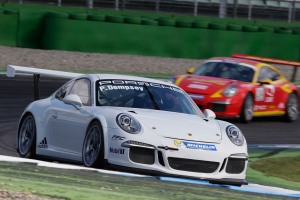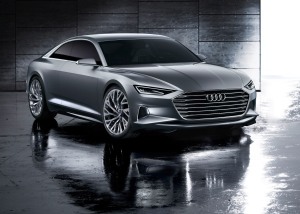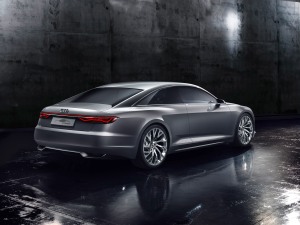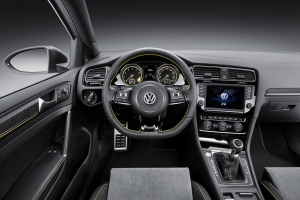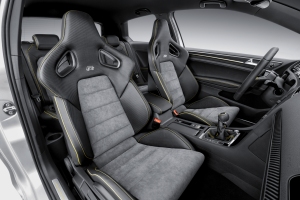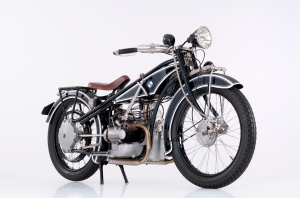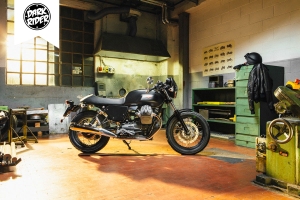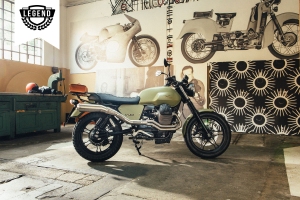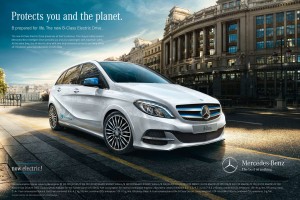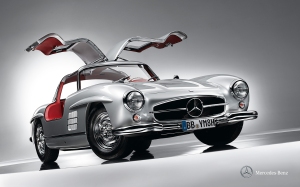Ingolstadt/Los Angeles, November 19, 2014
Audi is launching into a new design era: At the Los Angeles Auto Show, Marc Lichte, Head of Design, is presenting the Audi prologue concept car. Lichte is giving the Audi brand a new styling direction in the large coupe.
“When he moved to Audi, Marc Lichte launched a design offensive,” says Prof. Dr. Ulrich Hackenberg, Board Member for Development, who brought him to Ingolstadt in 2014. “His clear philosophy and precise understanding of Audi DNA let him develop a design strategy that is opening up entirely new perspectives for us. It is progressive and highly emotional; it expresses the technological competence and quality claim of the brand perfectly. The Audi prologue is its first proponent – it is a ‘signature car’ for Audi.”
Marc Lichte himself describes the character of the show car in this way: “Audi stands for sportiness, lightweight design and the quattro permanent all-wheel drive. In the Audi prologue, we are expressing this know-how in a new form – we have put the sportiest car in the luxury segment on wheels. Our team took new approaches in both exterior and interior design.”
Audi design is now expressing progressive technology even more powerfully. The two-door coupe has a flowing, elegant shape in a sporty and taut design. Its forms and lines are unmistakable and introduce many new ideas. In the clear and unobstructed interior, the architecture melds with the display and operating concept to create a new type of unit. The entire front of the instrument panel is a large touch display, and a portion of the user interface operates with a new type of OLED display made of organic LEDs.
The show car’s technology combines power, comfort and efficiency. The 4.0 TFSI produces up to 445 kW (605 hp) of power and 750 Nm (553.2 lb-ft) of torque; it accelerates the Audi prologue from 0 to 100 km/h (62.1 mph) in 3.7 seconds. Its dynamic all-wheel steering, in which the rear wheels can turn up to five degrees, makes the large couple extremely responsive and stable while driving.
Harmonious proportions: exterior
The Audi prologue is somewhat shorter and flatter than today’s production A8* with a length of 5.10 meters (16.7 ft), wheelbase of 2.94 meters (9.6 ft), width of 1.95 meters (6.4 ft) and height of 1.39 meters (4.6 ft). A dominant feature at its low front end is a Singleframe displaying the four rings that is integrated into the automobile architecture. The large radiator grille has been widened much more, and it is positioned lower than on today’s production models. Its strong horizontal effect expresses an image of powerful dynamics. The cross bars have a finely structured diamond pattern, and their ends are split.
The headlights – shaped like wide, flat wedges – are located with their tips above the Singleframe. They present high-resolution Matrix laser technology: an innovation from Audi which opens up new approaches to headlight design and enables completely new functionality. The pupils of the headlights are formed by a projection lens with a laser light source – they generate a matrix that illuminates the entire street in high resolution. Hovering beneath this element are five plastic lenses that are supplied with light via a glass fiber bundle, which are mounted to a lightweight structure and further extend the high-beam light. The new laser technology lets lighting designers create an extremely lightweight, compact and elegant eye-shaped form.
Audi quattro DNA visualized
Also new is the sculptural form of the air intakes under the headlights – the distinctive air intakes have diamond pattern screens in their interiors. A dynamically contoured blade, which is clearly separated from the bumper by a gap, elicits associations to motor sport. Mounted to it are two additional spoilers in glossy black, which give the show car an even stronger and wider stance on the road.
In side profile, its flowing silhouette expresses the character of forward motion in the Audi prologue. Balanced proportions put equal emphasis on the front and rear wheels – a clear reference to the quattro DNA of Audi. The powerful 22-inch wheels are set in widely flared wheel arches. They are fitted with tires of size 285/30. Each wheel’s ten intertwining Y spokes project a filigreed, three-dimensional and powerful image.
Aluminum components in hand-finished quality
The door mirrors are small aluminum sculptures: The mirror housings in the form of a shell create a flowing transition to the window slot trim. They also integrate the open-door sensor surfaces. The doors have no handles, and they are opened electromechanical when the illuminated sensor surfaces are touched.
Vast areas of the stiff multi-material body of the Audi prologue consist of aluminum and ultra-high-strength steel. The windows are framed by matte and polished aluminum trim strips. At the end of the low roof dome, the window framing transitions into a solid surface of aluminum; its workmanship illustrates the handcraft-like manufacturing quality of Audi, and it enables lowering of the windows despite the C-pillars. This area integrates the fuel tank lid on the right side of the show car. It has an electric opening mechanism and can be lowered completely into the C-pillar by pressing a button in the interior. For enhanced convenience in refueling, the tank closure does not have a cap. The paint is a light diva gray, a new type of pearl effect paint, which has a warm and elegant appearance.
Entire front of instrument panel becomes a display
A radically new type of display and operating concept is embedded in the elegant architecture. Across its full width, the front of the instrument panel is designed to be a display surface which integrates three touch displays. The driver-oriented display to the left of the steering wheel is used to control functions for lighting and assistance systems. The driver-oriented operating unit to the right contains media controls. The front passenger faces a widescreen display that is integrated into the full surface of the instrument panel; it is used to individually and conveniently control entertainment features.
The new type of front passenger display enables digital interaction between the driver and front passenger for the first time. A wiping movement by the passenger is all it takes to send pre-configured routes to the driver’s display and input them into the Audi virtual cockpit future.
On the console of the center tunnel, there is a fourth flexible touch display that is ergonomically adapted to the driver; it is used for climate control, handwriting input and other vehicle settings. This display consists primarily of an extremely thin, bendable OLED film (OLED: organic light emitting diodes), and it displays extremely sharp images that are rich in contrast. When not in use, the OLED display is integrated flush to the center console and is nearly invisible. When the car is started, the flexible display stands up. The fact that it bends ensures a constant distance to the hand which makes for better ergonomics. When operating the display, the wrist rests on the low-positioned gear selector lever of the eight-speed tiptronic.
Designers have also redesigned the shift-by-wire lever. It is now integrated seamlessly into the center console. Cup holders and smartphone slots are installed under lids on the center console, to the left and right of the console support element.
New five-link wheel suspensions
In the chassis, the adaptive air suspension sport – an air suspension with controlled damping – offers a large adjustment range between smooth rolling and very tight handling; it also varies the show car’s ground clearance over several levels. The front and rear suspensions are engineered as lightweight five-link designs. The large carbon-fiber ceramic brake discs decelerate the show car powerfully. On the 20-inch front brakes, they are gripped by six-piston fixed calipers.
A technology highlight of the Audi prologue is its dynamic all-wheel steering – it boosts driving dynamics and ride comfort by an intelligent combination of dynamic and all-wheel steering. The driver therefore can enjoy an automobile with extremely good handling. In the lower speed range, this is made evident by better agility and turning ability. In the higher speed range, developers improved the car’s responsiveness which leads to greater vehicle stability. Overall, dynamic all-wheel steering – with rear wheel steering angles of up to five degrees – makes it easy to maneuver when parking and offers precise and sporty steering on country roads and impressively comfortable steering on freeways.
Fuel consumption of the models named above:
Audi A8:
Combined fuel consumption in l/100 km: 11.3 – 5.9** (20.8 – 39.9 US mpg);
Combined CO2 emissions in g/km: 264 – 144** (424.9 – 231.7 g/mi)


